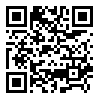Volume 12, Issue 2 ( June 2020 2020)
Iranian Journal of Blood and Cancer 2020, 12(2): 58-63 |
Back to browse issues page
Azam Khedri1 
 , Fatemeh Asadi *
, Fatemeh Asadi * 
 2, Seyedeh Moloud Rasouli Ghahfarokhi3
2, Seyedeh Moloud Rasouli Ghahfarokhi3 
 , Narges Obeidi4
, Narges Obeidi4 
 , Frough Talebi5
, Frough Talebi5 
 , Sahar Moghbelinejad6
, Sahar Moghbelinejad6 


 , Fatemeh Asadi *
, Fatemeh Asadi * 
 2, Seyedeh Moloud Rasouli Ghahfarokhi3
2, Seyedeh Moloud Rasouli Ghahfarokhi3 
 , Narges Obeidi4
, Narges Obeidi4 
 , Frough Talebi5
, Frough Talebi5 
 , Sahar Moghbelinejad6
, Sahar Moghbelinejad6 

1- Department of Clinical Biochemistry, Faculty of Medicine, Ahvaz Jundishapur University of Medical Science, Ahvaz, Iran
2- Department of Molecular Genetics, Science and Research Branch, Islamic Azad University, Fars, Iran , fatemehasadi@maiu.ac.ir
3- School of Nursing and Midwifery, Ahvaz Jundishapur University of Medical Sciences, Ahvaz, Iran
4- Department of Hematology, School of Para Medicine, Bushehr University of Medical Sciences, Bushehr, Iran
5- Blood Transfusion Organization, Bushehr, Iran
6- Department of Genetics, Qazvin University of Medical Sciences, Qazvin, Iran
2- Department of Molecular Genetics, Science and Research Branch, Islamic Azad University, Fars, Iran , fatemehasadi@maiu.ac.ir
3- School of Nursing and Midwifery, Ahvaz Jundishapur University of Medical Sciences, Ahvaz, Iran
4- Department of Hematology, School of Para Medicine, Bushehr University of Medical Sciences, Bushehr, Iran
5- Blood Transfusion Organization, Bushehr, Iran
6- Department of Genetics, Qazvin University of Medical Sciences, Qazvin, Iran
Abstract: (2897 Views)
Background: Hemoglobinopathies are inherited blood disorders with an autosomal recessive pattern. We aimed to evaluate the frequency of mutations of thalassemia and hemoglobinopathies among couples referred to health centers of Izeh in Khuzestan Province, Iran.
Methods: This cross-sectional study was performed on 150 couples referred to Izeh Health Centers in 2015-2018. DNA was isolated from peripheral venous blood samples and then the HBB gene was analyzed by using Sanger sequencing. For molecular analysis of α-globin gene, multiplex Gap-PCR and ARMS-PCR was performed to identify mutations of α-thalassemia.
Results: DNA analysis revealed 13 different mutations for beta thalassemia in studied couples. Three mutations including 36/37 (- T), IVS-II-1 (G>A) and IVS-I-110 (G>A) accounted for 20.7, 19.3 and 13.3% of beta thalassemia mutations, respectively. For alpha thalassemia; α3.7 (49.5%), -- MED (19.1 %) and -α4.2 (3.1%) were identified as the most common mutations.
Conclusion: Considering common alpha and beta mutations of this geographic area of Iran could be useful concerning genetic counselling in of the population where the rate of consanguineous marriage is high.
Methods: This cross-sectional study was performed on 150 couples referred to Izeh Health Centers in 2015-2018. DNA was isolated from peripheral venous blood samples and then the HBB gene was analyzed by using Sanger sequencing. For molecular analysis of α-globin gene, multiplex Gap-PCR and ARMS-PCR was performed to identify mutations of α-thalassemia.
Results: DNA analysis revealed 13 different mutations for beta thalassemia in studied couples. Three mutations including 36/37 (- T), IVS-II-1 (G>A) and IVS-I-110 (G>A) accounted for 20.7, 19.3 and 13.3% of beta thalassemia mutations, respectively. For alpha thalassemia; α3.7 (49.5%), -- MED (19.1 %) and -α4.2 (3.1%) were identified as the most common mutations.
Conclusion: Considering common alpha and beta mutations of this geographic area of Iran could be useful concerning genetic counselling in of the population where the rate of consanguineous marriage is high.
: Original Article |
Subject:
Adults Hematology & Oncology
Received: 2020/02/3 | Accepted: 2020/06/16 | Published: 2020/08/13
Received: 2020/02/3 | Accepted: 2020/06/16 | Published: 2020/08/13
| Rights and permissions | |
 |
This work is licensed under a Creative Commons Attribution-NonCommercial 4.0 International License. |
